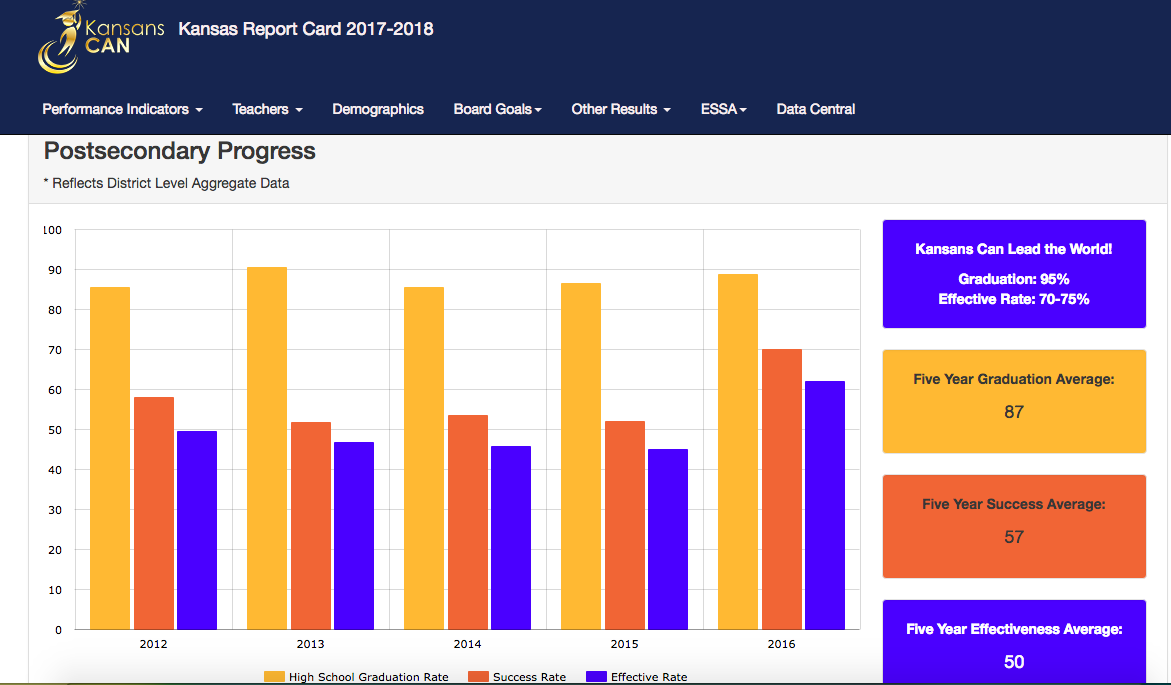By CRISTINA JANNEY
Hays Post
Hays USD 489 is showing strong results in directing students to post-secondary education.
Measuring post-secondary success is part of Kansas’ new state accreditation process. Hays staff released data compiled by the state during the school board meeting Monday.
 In 2016, HHS had a 88.7 percent graduation rate. 69,9 percent of HHS students reported post-secondary advances in the two years after graduation.
In 2016, HHS had a 88.7 percent graduation rate. 69,9 percent of HHS students reported post-secondary advances in the two years after graduation.
This includes earning an industry-recognized certification while in high school, a postsecondary certificate, a postsecondary degree or being enrolled for two years in a postsecondary education program.
The district earned a 62.1 percent effective rate.
“We are not just responsible for getting the students across the stage during graduation, but we want them to be successful beyond graduation. … This is something to celebrate,” Shanna Dinkel, assistant superintendent, said.
The district had a significant jump from 2015 when the district’s effectiveness rate was 44.9 percent.
Although reporting is improving and that might have played a role in the increase, Dinkel also said she thought individual plans of study and an emphasis in the district in building relationships with students is affecting students’ success after graduation.
The school still has a long way to go to meet the Kansans Can state goals, which are a 95 percent graduation rate and at least a 70 percent effectiveness rate.
However, Hays is outperforming many of its comparable schools.
For example, Salina had a 50.7 percent post-secondary success rate and a 44.6 percent effectiveness rate. Manhattan had a 53.6 percent postsecondary success rate and 41.2 percent effectiveness rate.
Another measure of relevance in education is attendance.
“Are students wanting to come to school?” Dinkel said.
The district’s absentee rate is slightly higher than the state average.
The district is looking harder at students who are chronically absent, which is defined as students who miss 10 percent or more of their school days.
“That does impact at an early age if you are chronically absent,” she said. “Those gaps get wider and wider and will really make an impact on whether you graduate or not.”
Chronic absenteeism for the district is at 10.25 percent compared to 13.9 percent for the state.
Dinkel said schools will be looking at working with individual students as they approach or pass that chronic absenteeism mark to reduce missed days.
